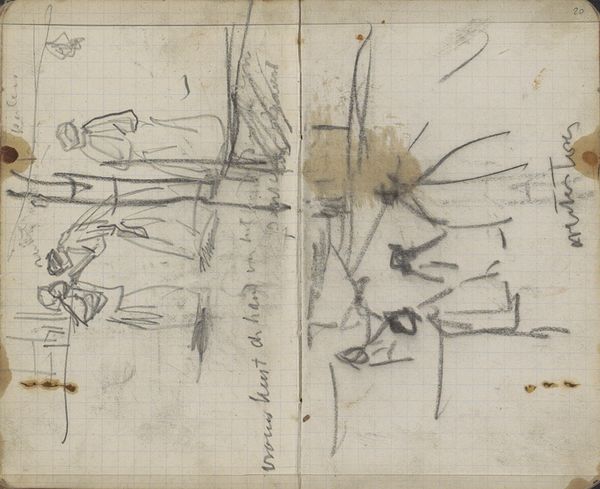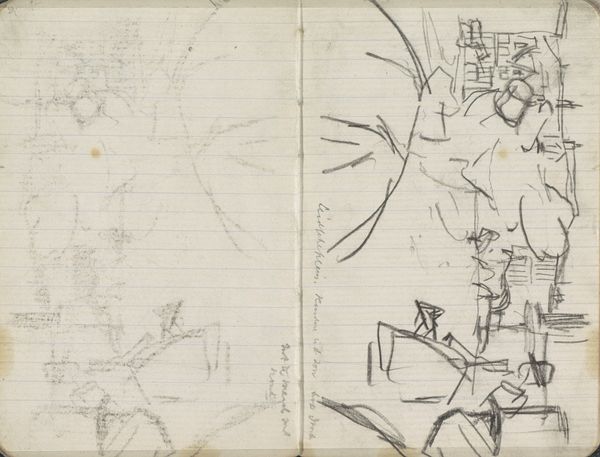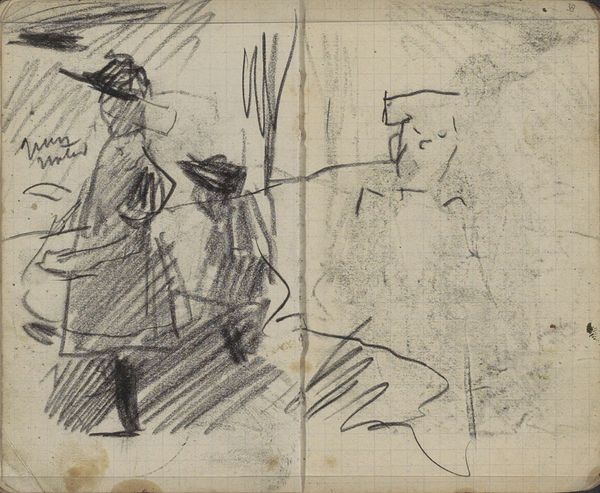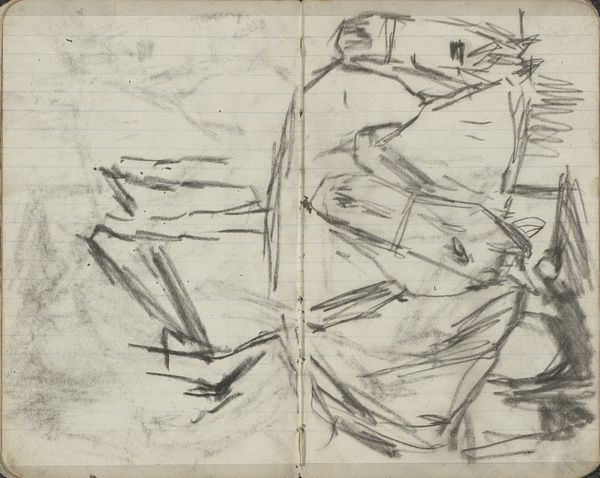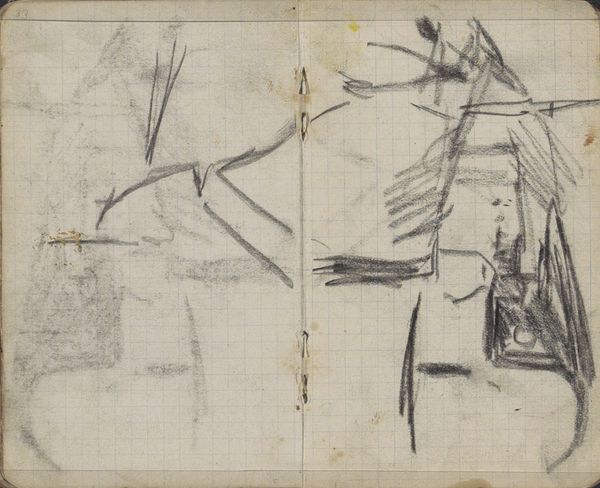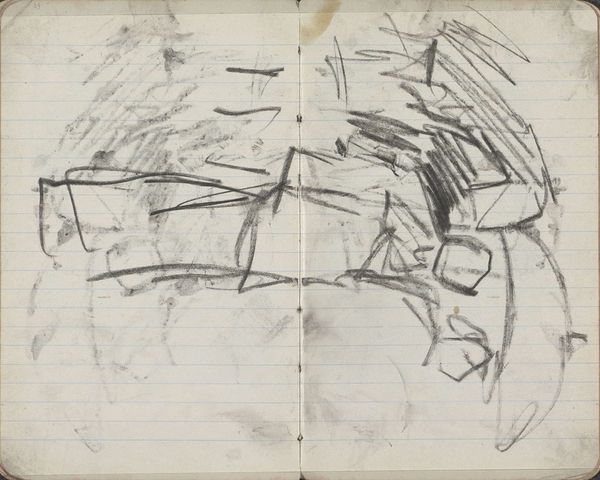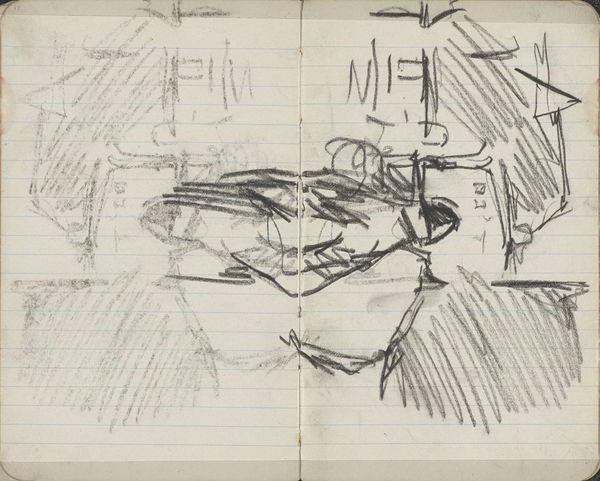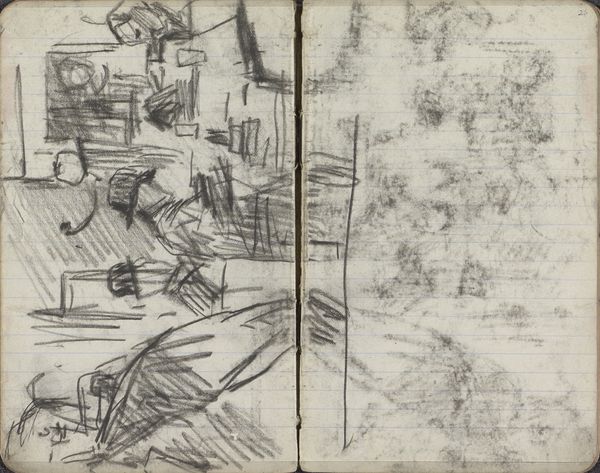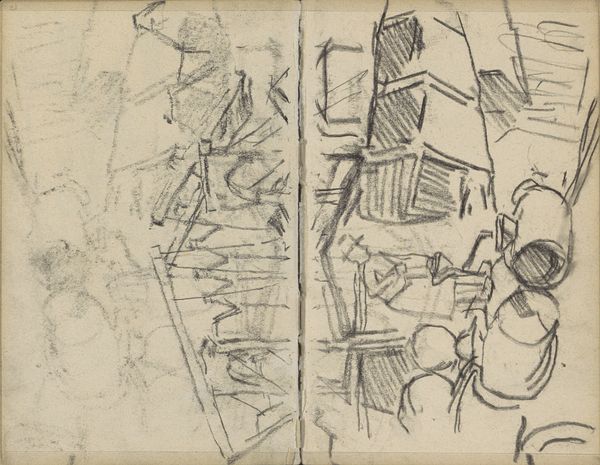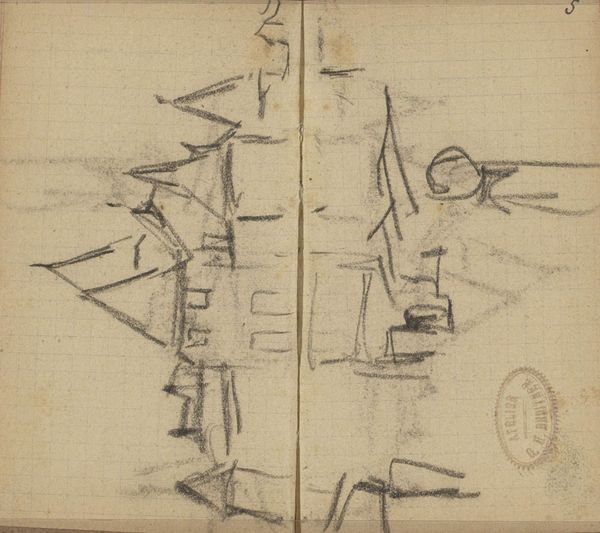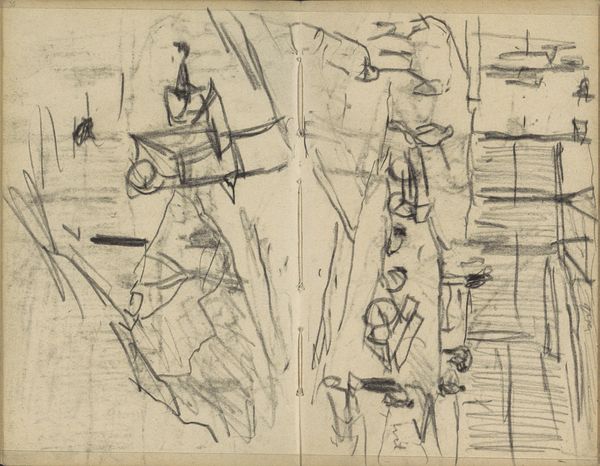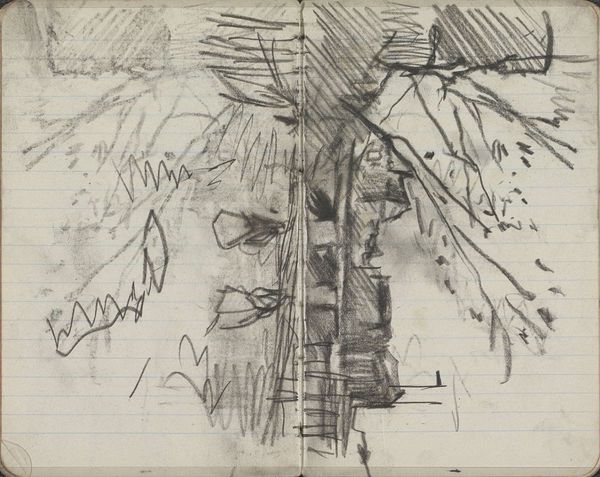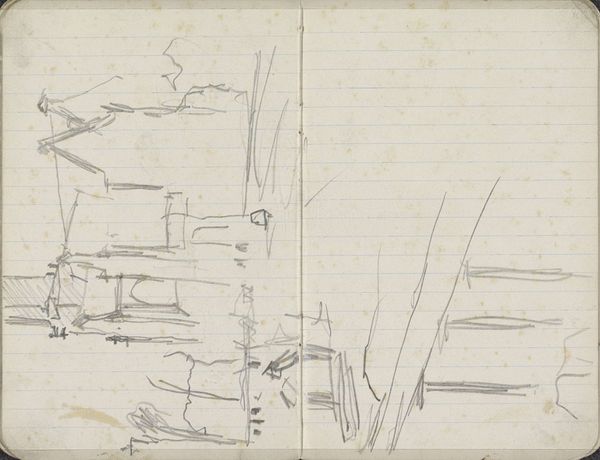
Gezicht op de Prinsengracht ter hoogte van de Rozengracht en de Bloemgracht te Amsterdam 1893
0:00
0:00
Copyright: Rijks Museum: Open Domain
Editor: Here we have George Hendrik Breitner's 1893 pencil drawing, "Gezicht op de Prinsengracht ter hoogte van de Rozengracht en de Bloemgracht te Amsterdam," currently held in the Rijksmuseum. The sketchiness creates a feeling of transience, as if capturing a fleeting moment in time. What can you tell us about this piece? Curator: Note the artist's decision to use toned paper. It serves as a middle value, allowing Breitner to suggest form and space with economy. How does the structure emerge from the seemingly random strokes of pencil? Editor: It’s almost like he’s deconstructing the scene into its most basic elements: lines, planes, and tones. I’m struck by how little he actually puts down on the page, yet how much information is conveyed. It makes you wonder what he chose to omit and why. Curator: Precisely. Consider the composition: the placement of forms on the page and the spatial relationships that are suggested by the varying densities of line. The sketchbook format itself also becomes an element. Notice the grid? Editor: Yes, the underlying grid of the sketchbook paper seems to reinforce the structured chaos of the scene, or vice versa, contrasting sharply with the freedom of his lines. Are there different possible interpretations based on these grids, planes, lines, and tones? Curator: Undoubtedly, such careful orchestration of visual elements is vital. This incomplete sketchy look embodies characteristics and impressionistic and formal qualities of his work at the time. Editor: I see that now; viewing the artwork from this point of view made me notice how the material composition gives life and meaning to the scene in question. Curator: Yes, art history gives you the history behind art forms as well.
Comments
No comments
Be the first to comment and join the conversation on the ultimate creative platform.
